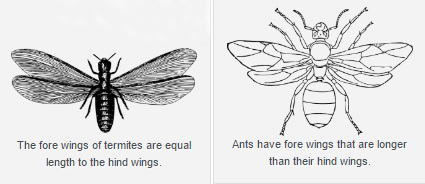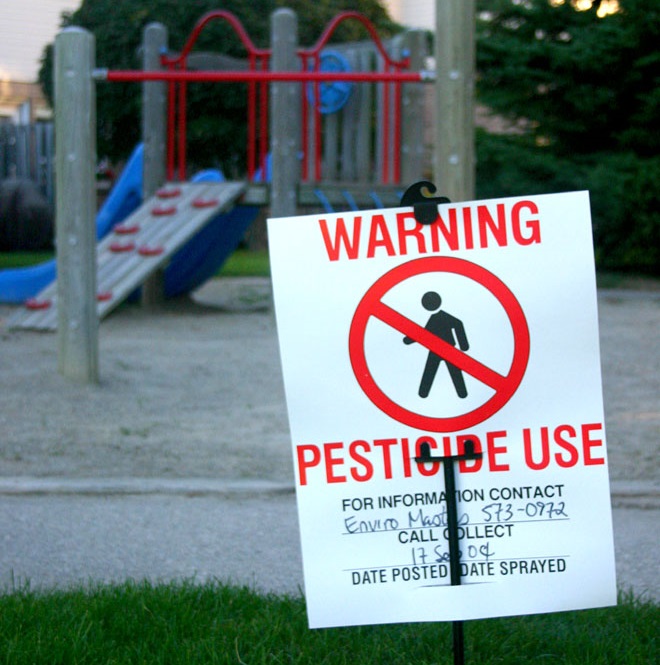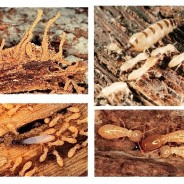Blog
Astrid One’s Stainless Steel Termite Barrier System is a Safe, Clean, Cost-Effective and Permanent Solution to Termite Infestation.
Culminating from extensive research and understanding of termite life-cycle and behaviour, Astrid One’s stainless steel termite barrier not only saves its users time and money, but is also indefinitely safer and cleaner than other forms of termite control.
Termite infestations cause extensive structural damage to buildings every year in Singapore and around the world. In the US alone, termite-related damage costs building owners approximately US$5 billion every year (about S$7 billion). And the problem isn’t just financial – termite infestations compromise the structural integrity of an affected building – and therefore the safety of its occupants and immediate surrounding area.
The seriousness of termite infestations has prompted Astrid One to develop better, safer and more permanent solutions. These efforts have culminated in our, one-stop, stainless steel termite barrier system and our proprietary, non-poison reliant, termite-trap baiting system. The combination of the two systems promises to provide a safe, permanent solution to termite infestation.
Our proprietary Stainless Steel Termite Barrier and Termite-Trap Baiting System are the ultimate in anti-termite solutions. Contact Astrid One at +65-6481 0138 – or email john@astridone.com.sg
What Are Termites?
To address termite infestations effectively it is first necessary to understand what they are. As Sun Tzu states in The Art of War, “For to win one hundred victories in one hundred battles is not the acme of skill. To subdue the enemy without fighting is the acme of skill.”
Generally, termites thrive in warm, tropical climates where moist, rotting wood is available. Feeding off the cellulose, termites rely on organic volatile compounds (organic matter in vapour or gaseous form) to detect this source of nutrition.
Termites search for food in a systematic manner, spreading its pioneers across a wide area. When food odours are detected, foragers begin to explore further from the nest toward the source before returning to mark their exploratory trail. These trails will then be followed by workers and soldiers where a non-branching subterranean tunnel or a trail above ground will be built, leading to the food source.
While there are many species of termite they primarily differ from one another by how they’ve adapted to different environments. Some species, like the West Indian drywood termites (Cryptotermes brevis), possess adaptive traits that allow them to survive in the absence of moist soil.
This characteristic trait makes them more persistent, where they are able to survive long enough in transported timber to be unloaded off urban centres. When this original source of food is depleted, termites then migrate to form new colonies, beginning the cycle of infestation in buildings and homes.
Termite Lifecycle.
The termite begins its life hatching from an egg into a nymph. The nymph then enters the adult phase of development where it undergoes a series of moulting to become workers, soldiers or alates.
As the colonies become fully established, worker termites moult into alate nymphs before finally moulting into their final winged forms. The reproductive winged males and females then swarm from the hive in pairs in search of a suitable place for a new colony. When they do, they dig out a chamber large enough for the both of them before closing up the entrance and mating.
Keep in mind that both termites and ants undergo alate transformation, so it’s natural that swarming ant alates can set off false alarms. Below is an illustration showing the distinctive differences between termite alates and ant alates.

Cost-Efficient, Time-Saving and Safe.
To deal with termite infestations, pest exterminators have long relied on chemical insecticides to get the job done. However, chemical extermination methods have come under heavy criticism because of the health hazards it poses to individuals, as well as the damage it causes to the environment.
In addition, chemical insecticides are only a temporary solution and periodic retreatment is required to prevent a recurring infestation. In Singapore, a single treatment can cost anywhere from S$500 to S$2000 per year for the area the size of a small flat, with larger buildings being significantly harder to treat (and therefore costing a lot more).
To design an effective endgame solution to termite infestation, Astrid One has performed extensive studies to understand its life-cycle and behavioural patterns. Combined with our experience and knowledge in construction, the result was a first-of-its-kind stainless steel termite barrier – a true revolution at the time. The concept of the system is simple; to keep termites out of concrete structures, a stainless steel barrier (which is impenetrable to termites) is installed at all possible termite entry points.
And, unlike chemical treatment (which is a temporary measure), a stainless steel termite barrier lasts indefinitely with annual inspections. Realistically, the system will never need to be repaired or replaced. Below is a list of advantages that our stainless steel barrier system provides:
- Environmentally friendly – conserves environmental integrity of immediate area, including ground water systems.
- Permanent solution, with yearly inspections to ensure that the system is fully operational.
- Long-term cost savings.

The serious hazards that chemical pesticides pose to human health and the environment has led to strong criticism to its continued widespread use.
Termite Baiting System – Perfectly Complements the Stainless Steel Termite Barrier.
Baiting systems are used to exterminate the termites where their presence has been positively identified through inspection. Taking advantage of our understanding of the termite life cycle, Astrid One has the most effective termite baiting system in the industry.
Based on studies and experience, Astrid One uses a termite baiting system that incorporates a number of unique features that make it unique in the industry:
i) UV-Protected Casing.
A UV-protected casing resolves the issue of UV-related damage and deterioration that plague similar systems. This raises the casing’s lifespan and ensures that it will last long enough to wipe out the termite colony before expiring. UV shielding is also important as UV light may also damage organic compounds in the wooden interceptor, reducing its effectiveness.
ii) Easy Installation and Operation.
The second improvement is its ease of installation and bait renewal. It also features a larger bait container to continue baiting termites for longer periods at a time. Our wood baits are also designed to maximize the amount of volatiles given off to attract termites better and farther away while minimizing disturbances to the colony.
iii) Innovative Monitoring and Inspection Capabilities.
Third, our system is designed in such a way that it’s possible to perform routine inspections without disturbing the termites underneath, even when the system is active. This is important as termites are survivors and are extremely sensitive to any disturbance that could represent a threat to the colony. Upon perceiving a potential threat, they immediately vacate the baiting station and cause the station to become ineffective. The sudden disappearance may also lead to a false conclusion that the termites had been exterminated during inspection.
For more information, contact us at:
Email : john@astridone.com.sg
Tel : +65-6481 0138

